The 5 Types of Skin Cancer You Need to Know How to Recognise
December 12 2018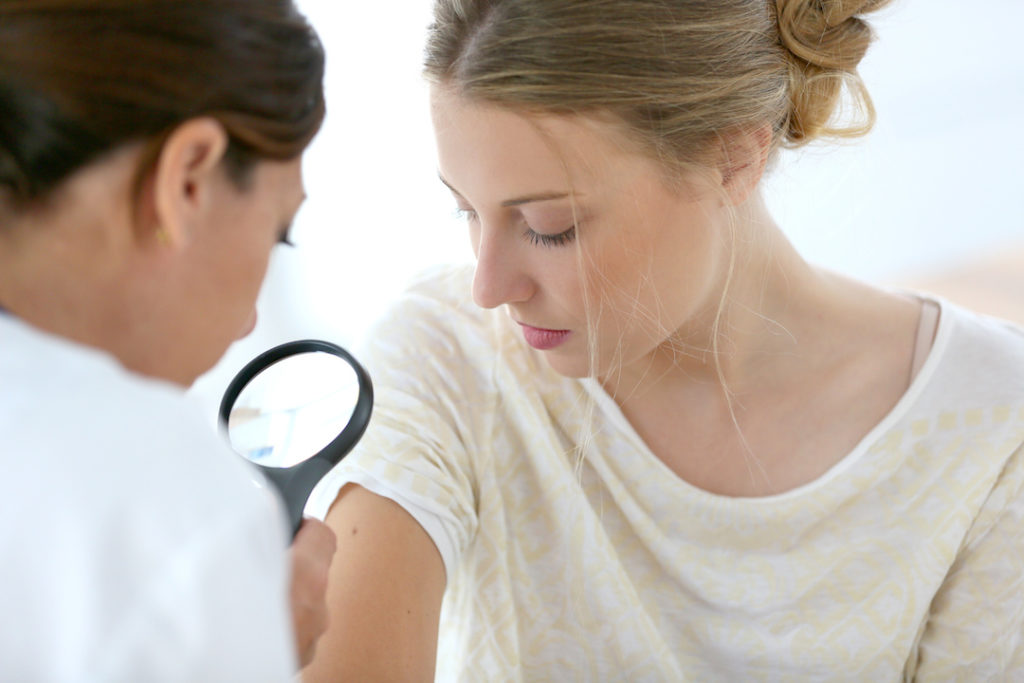
If there’s one good thing about skin cancer, it’s that you can spot it yourself-if you know what to look for. And the easier you can find skin cancer, the sooner you can seek treatment.
The Cancer Council recommends developing a regular habit of checking your own skin for any changes. Don’t rush through this=do it when you have time to examine your skin from head to toe, using mirrors as necessary to check your back and other hard-to-see places. (You can ask a partner or family member to help you.)
Be on the lookout for the following signs of five different types of skin cancer. “The bottom line is if your skin starts forming a spot that does’t look like anything else and it’s not getting better, it’s growing, or it’s acting differently than your other moles, get it checked out,” says dermatologist Dr Saira George.
Warning: the following images may be unpleasant to look at.
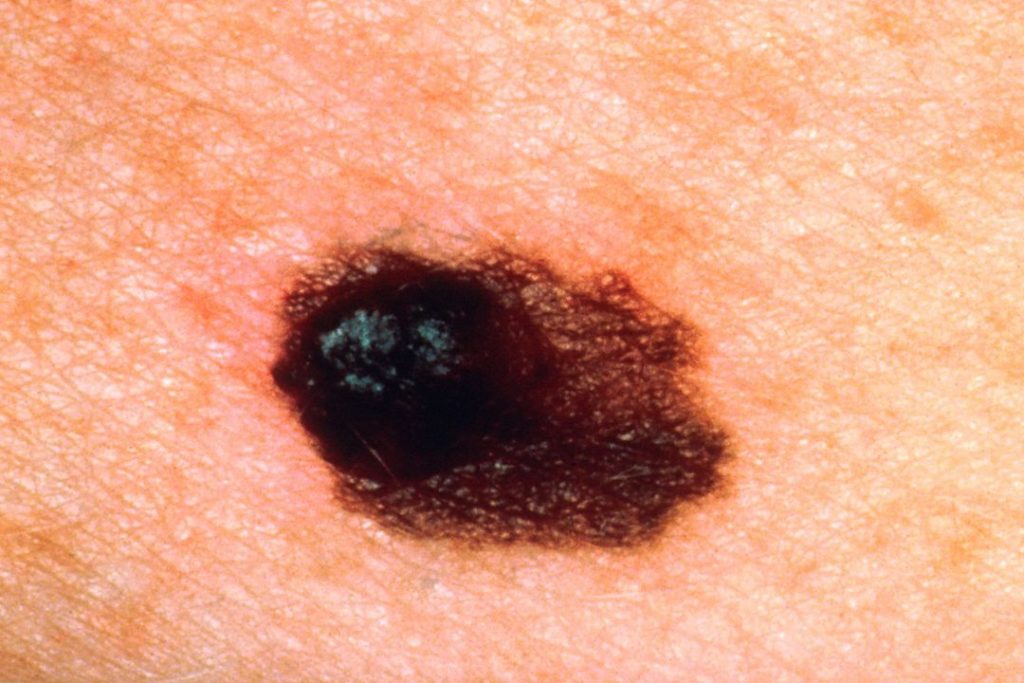
Melanoma
The rarest, yet deadliest form of skin cancer, melanoma arises from the uncontrolled growth of a type of skin cell called melanocytes, explains dermatologist Dr Jennifer DeFazio.
How to spot Melanoma
Use the ABCDE method, looking at your moles for changes in the following:
Asymmetry: Do both halves of the lesion look the same? Melanoma lesions can appear asymmetric, whereas healthy moles are typically symmetrical.
Border: Irregular, scalloped, or poorly defined edges may be melanoma. Normal moles have nice, sharp, regular borders.
Colour: Melanomas tend to be multi-coloured – black, brown, red, and/or blue. Healthy moles are typically one colour or maybe two, but that colour is evenly distributed. This isn’t so for a potentially dangerous mole.
Diameter: If a mole is greater than 6 millimetres in diameter (about the size of a pencil eraser), get it checked out.
Evolving: If you notice a spot that is changing in any way – size, shape, colour, borders, texture – or if the spot itches or bleeds, see a doctor.
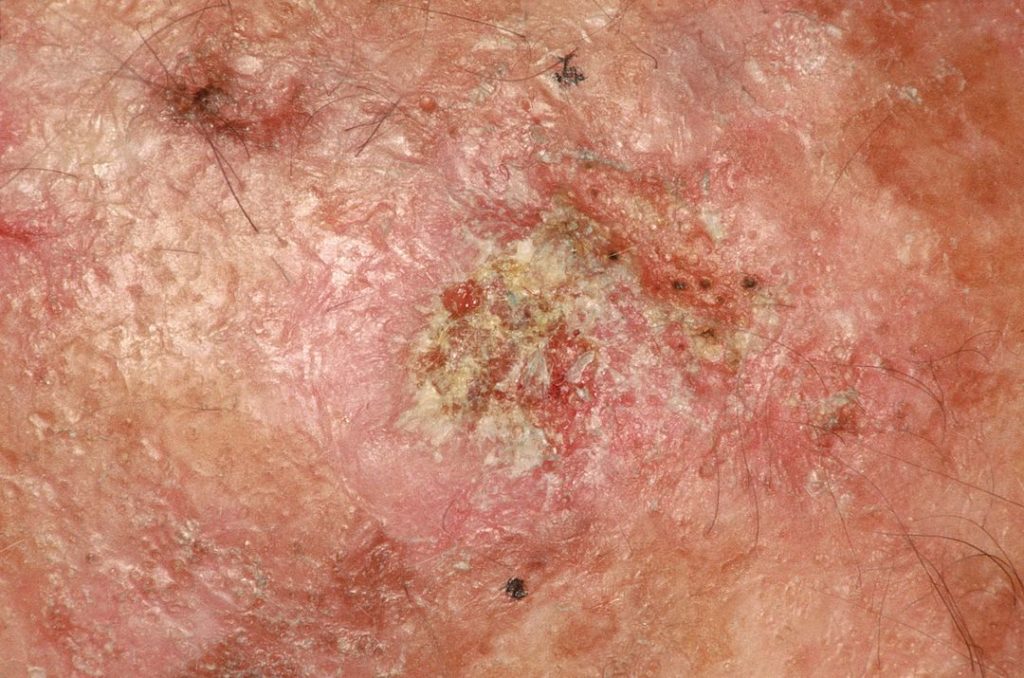
Actinic Keratosis
Also called solar keratosis, actinic keratosis is a pre-cancer or a premalignant lesion, explains dermatologist Dr Anthony Rossi. It’s caused by too much exposure to the sun, and most people develop more than one. Some (but not all) develop into squamous cell skin cancers, so it’s important to spot actinic keratosis before it advances.
How to spot Actinic Keratosis
These lesions are usually rough, red, and scaly, and vary in size. These often occur on the face, lips, ears, back of the hands, and arms, but can occur on other areas exposed to the sun. They may also be itchy or painful, and have additional colours such as pink, red or flesh tones.
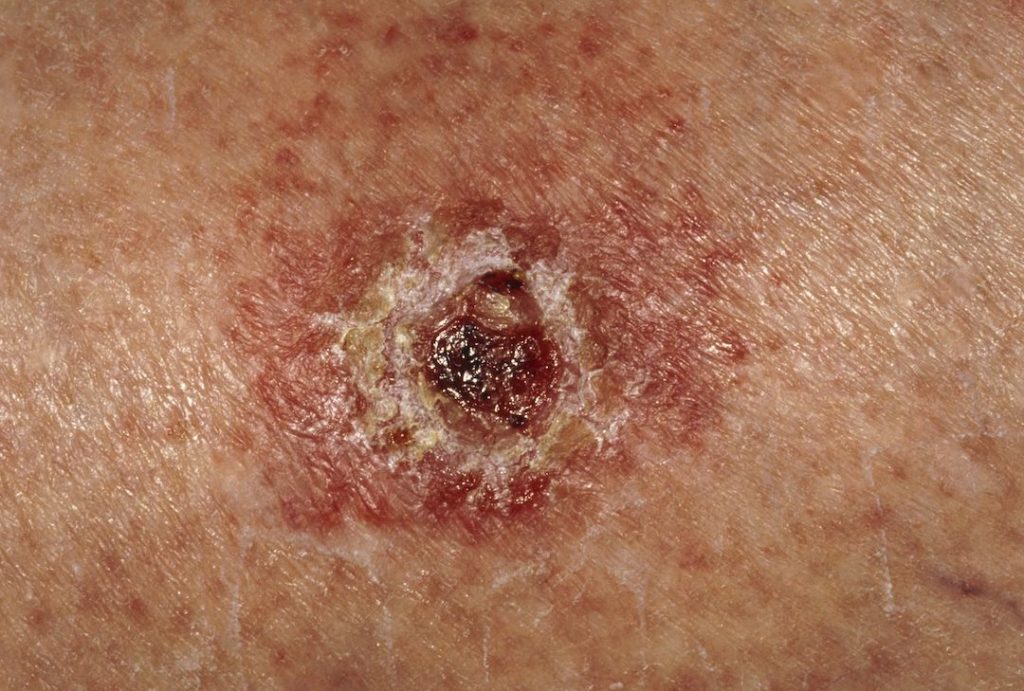
Basal Cell Carcinoma
The most common type of skin cancer, basal cell carcinoma is also the number one type of cancer worldwide. According to the Cancer Council, 70% of non-melanoma skin cancers are basal cell carcinoma. This cancer tends to be slow growing and is very treatable.
How to spot Basal Cell Carcinoma
“Unfortunately basal cell carcinoma is easy to ignore because a lot of times people think the spot is a pimple or blemish that won’t heal,” Dr George says. The key tip-off is that these lesions are pearly or shiny bumps or spots. They can occur anywhere, but oftentimes develop on the face, neck, and ears. They tend to form scabs or sores, be scaling and flaky, or bleed easily and grow over time.
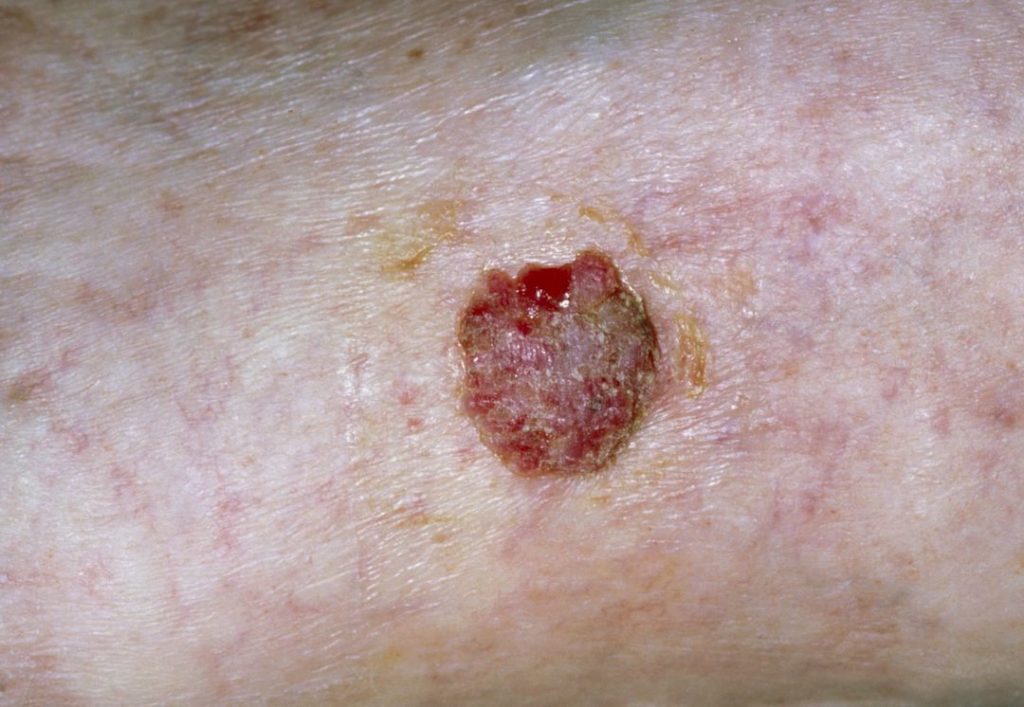
Squamous Cell Carcinoma
The second most common type of skin cancer, squamous cell carcinoma is similar to basal cell carcinoma in that it tends to be a pink bump or patch that won’t go away, Dr George explains. Although it can spread to other parts of the body, this is uncommon and squamous cell carcinoma is easy to treat when spotted early.
How to spot Squamous Cell Carcinoma
Usually pink to red, these can grow like a flat patch or become larger and nodular, Dr Rossi says. Often rough, these patches can have a wart-like surface or be scaling, bleeding, itchy, and/or painful. Unlike squamous cell carcinoma, these lesions are not pearly and shiny.
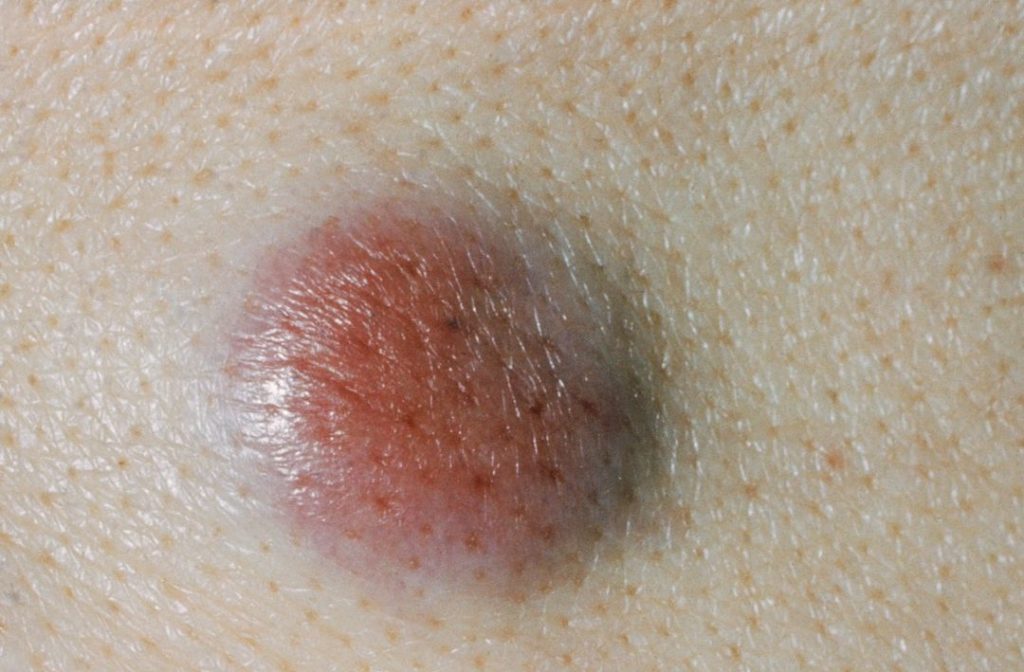
Merkel Cell Carcinoma
Although rare, this skin cancer is one of the most dangerous, as it can grow rapidly and spread to other parts of the body.
How to spot Merkel Cell Carcinoma
Merkel cell carcinomas tend to be small; painless; red, purple, or pink in colour; feel firm; and may be shiny. They typically develop on the face, neck, or arms, but can develop anywhere and grow quickly.
Article sourced from and originally appeared on Prevention Australia.
